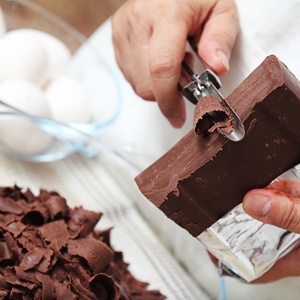
Candy makers battle over the color purple
October 7, 2013 7:25 pm Leave your thoughts
Everyone knows that Cadbury chocolate products come in a purple wrapper. But this isn't just a design choice on the part of the chocolate makers. Cadbury actually has a trademark on the color purple.
At least, it did until rival candy maker Nestle filed a lawsuit in the England and Wales Court of Appeal, challenging the trademark on the grounds that it was too vague. Last week—perhaps unsurprisingly—the Washington Post reported that the court ruled in Nestle's favor. Cadbury is now considering an appeal.
"Our color purple has been linked with Cadbury for a century and the British public has grown up understanding its link with our chocolates," Cadbury officials said in a statement.
This may sound crazy, but it's actually more common that you might think. According to an article in the Post, the first color trademark in the U.S. was given to Owens Corning Fiberglass in 1987. You likely know it as the "Pink Panther" insulation. As the Supreme Court ruled in 1995, businesses that are seeking to trademark a color must prove both "originality" and "secondary meaning." In other words, not only must the color be used in a unique way, but the general public must already recognize the product's design.
Of course, there are legitimate questions over whether these types of trademarks offer unfair advantages.
Regarding the use of the color purple, Lisa Ramsey, an intellectual property professor at the University of San Diego School of Law told the Post that "[i]t's associated with the Queen. Why should only one company be able to invoke the history of the royal family?"
Businesses that are facing questions about their trademarks should work with a Phoenix business attorney who specializes in intellectual property.
Categorised in: Intellectual Property Law
This post was written by




